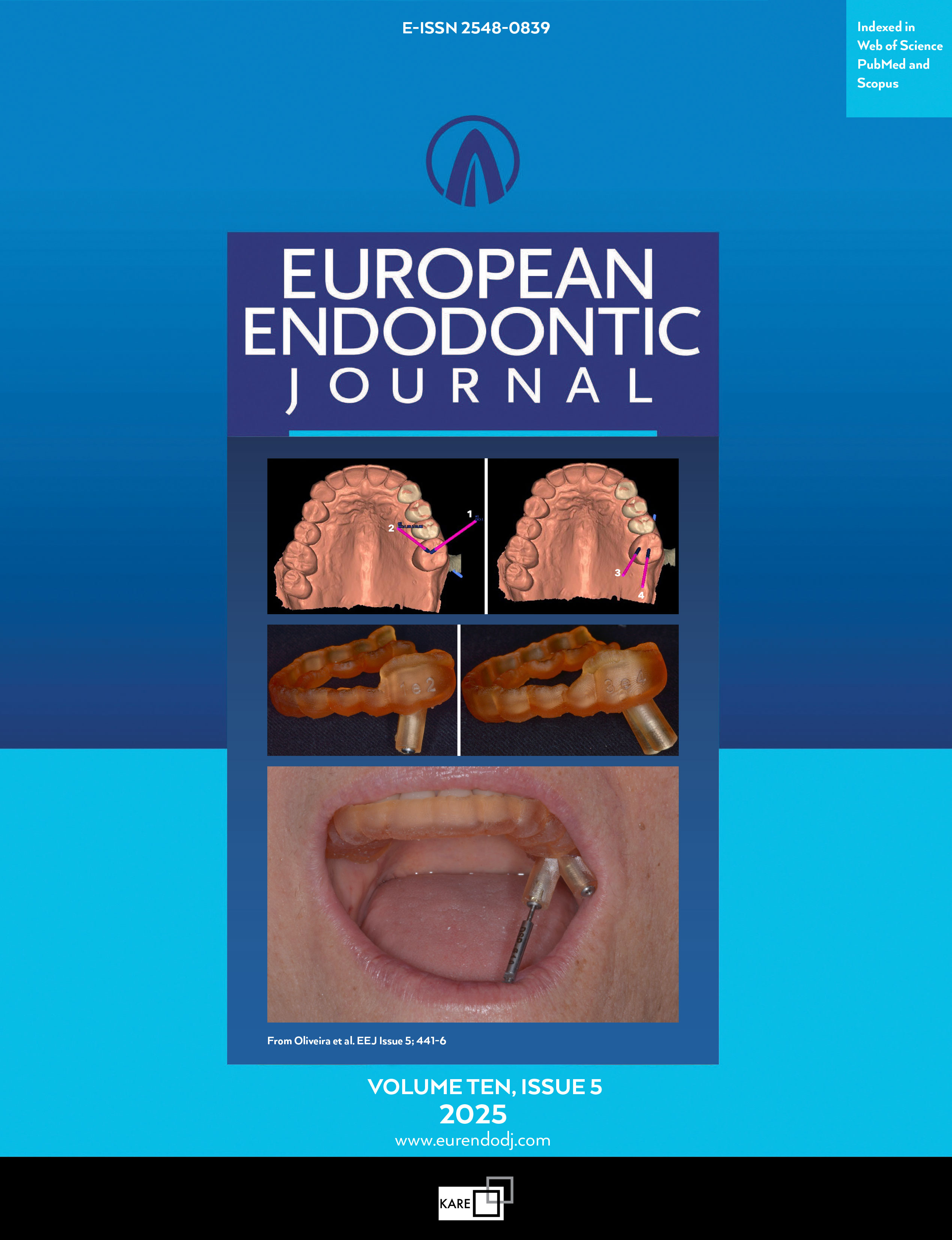Metrics
2024 IMPACT FACTOR
5 year Impact Factor
Eigenfactor Score
2024 CiteScore
Journal Citation Reports
(Clarivate 2025, JIF Rank)
SEM Analysis and Pulp Tissue Dissolution Following Retrograde Preparation and Irrigation in Surgical Endodontics: A Novel Approach
Cosimo Ferraro1, Mariangela Cernera2, Dina Abdellatif6, Marzio Galdi1, Luigi Esposito2, Gianrico Spagnuolo2, Davide Mancino5, Alfredo Iandolo61Department of Medicine, Surgery and Dentistry, Scuola Medica Salernitana, University of Salerno, Salerno, Italy2Department of Neuroscience, Reproductive Sciences and Dentistry, University of Naples Federico II, Naples, Italy
3Besançon Regional University Hospital Center, Besançon, France
4Sinergies Laboratory EA, University of Franche-Comté, Besançon, France
5Department of Endodontics, University of Strasbourg, Faculty of Dental Surgery, Federation of Medicine Translational of Strasbourg and Federation of Materials and Nanoscience of Alsace, Strasbourg, France
6Besançon Regional University Hospital Center, Besançon, France; Sinergies Laboratory EA, University of Franche-Comté, Besançon, France
Objective: This study aimed to assess the efficacy of a novel retrograde irrigation protocol involving ultrasonic activation, compared with conventional techniques, using two complementary experimental models.
Methods: Experiment 1: Sixty extracted human mandibular premolars were endodontically prepared, obturated, and randomly assigned to three groups (n=20): Group 1 (saline irrigation), Group 2 (ultrasonically activated 17% EDTA gel and 5.25% NaOCl gel), and Group 3 (no irrigation). Following 1 mm apical resection and 3 mm retrograde cavity preparation, rootend cleanliness was assessed using scanning electron microscopy (SEM). Three calibrated, blinded examiners evaluated smear layer and debris scores. Experiment 2: A 3d-printed artificial canal system with lateral extensions containing bovine pulp tissue was used to simulate organic material. Groups received: Group 1 (saline), Group 2 (ultrasonically activated 5.25% NaOCl gel), Group 3 (no irrigation). Pulp dissolution was measured using a high-precision analytical microbalance. Data were analysed using the Kruskal-Wallis test and Dunn-Bonferroni post hoc (Experiment 1), and one-way ANOVA with Tukey HSD (Experiment 2). A significance level of p<0.05 was adopted.
Results: In Experiment 1, Group 2 showed significantly lower debris and smear layer scores than Groups 1 and 3 (p<0.001). In Experiment 2, only Group 2 achieved complete pulp tissue dissolution (p<0.001).
Conclusion: Ultrasonically activated EDTA and NaOCl gel significantly enhance cleaning efficacy and organic tissue dissolution in retrograde endodontic surgery, allowing for a more conservative apical resection approach.
Manuscript Language: English
(259 downloaded)


